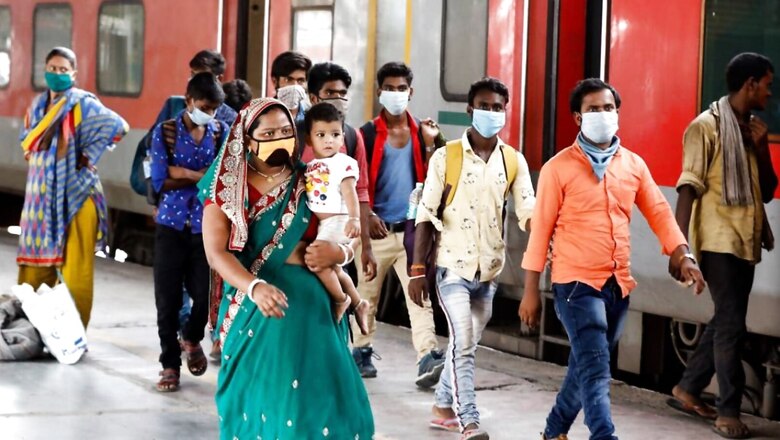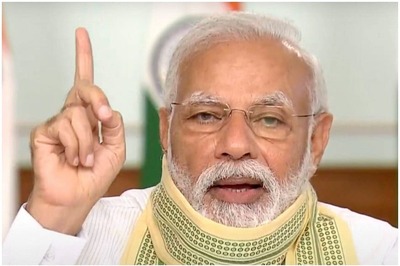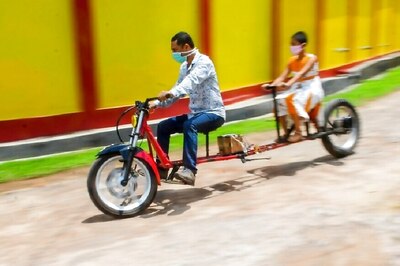
views
In his alarmist, 1968 book titled The Population Bomb, American biologist and Malthusian Dr. Paul R. Ehrlich had rather derogatorily described India from his 1966 visit as a country where “the streets seemed alive with people…. People, people, people, people”.
This vivid imagery was the mainstay of the global hunger–poverty debates of the second half of the last century. Indian visualization was taken as a proxy measure in judging the country as poor.
In 1971, two economists V. N. Dandekar and N. Rath presented the first proper estimate of Indian poverty. Their systematic assessment based on the data from the National Sample Survey correlated income and hence poverty levels to per capita requirement of daily calorie intake pegged at 2,250 calories.
This methodology continued to be in use for several years, although it was not based on a wide consumption basket. The argument in favour of this methodology was that calorie intake-based poverty line determination was useful for inter-period comparisons.
Through the 1990s post-liberalisation, Indian poverty remained a hotly contested topic in the statistical as well as the political realm. The claim that India’s extreme poverty reduced from 36% to 26% of the population over that decade remained a subject of several academic studies.
In 2009, a report by economist Suresh Tendulkar furthered the debate by including expenses on healthcare and education as part of poverty determination. This report set Rs. 4,824 and Rs. 3,904 as the urban and rural monthly income levels for a family of five as the poverty baseline. This report was one of the earliest topics of loud discussion in the then-nascent Indian social media.
The report came under sharp attack, especially from Right To Food activists. They argued that the report lowballed the poverty line and used low values for ideal calorie intake. This methodology was used in the National Sample Survey of 2013, which found that poverty in India was down to 22%.
The World Bank, which does the most authoritative international work on national poverty, has set $1.9 as the International Poverty Line, measured in 2011 purchasing power parity (PPP) dollars. Since 2017, it has also been reporting a Low-Middle Income Country poverty line which is set at $3.2 levels. The estimated 22% population living in poverty was not too different from the levels set by the World Bank.
A recently published International Monetary Fund (IMF) paper by Surjit Bhalla, Karan Bhasin and Arvind Virmani is the most recent attempt to further the poverty debate in India and perhaps the most significant academic work in this space since the Suresh Tendulkar report.
This paper contrasts the findings of the World Bank study, though even that study demonstrated a directional reduction of poverty over the last decade. The authors of the IMF paper also explain that India’s NSS survey methodology has itself changed since 2011-12, but does not reflect in various World Bank studies.
The IMF paper is premised on the argument that using the private final consumption expenditure (PFCE), a component of national accounts is a better way to determine poverty levels than using the survey methodologies. Using the PFCE data, the authors establish that extreme poverty in India had almost vanished by 2019.
A data-based study recently published under the aegis of the World Bank estimated this number to be 10%. The authors of the IMF paper however argue that survey data underestimates the consumption level, which is better reflected in PFCE, which is the estimate of actual consumption.
Also Read: In Times of VUCA, Being Atmanirbhar is the Only Way to Stay on Top, Ensure Growth
A similar paper has been recently published by the Becker Friedman Institute for Economics at the University of Chicago. Studying single-parent household poverty in the United States, the paper bears the conclusion that while survey data pegged the poverty reduction at 45% between 1995 and 2016, the national aggregate consumption data shows this reduction at 62%. More research work in this area can tilt the balance of acceptance in favour of Bhalla, Bhasin and Virmani and in that sense, their paper breaks new ground in understanding poverty elimination.
The paper further argues that even in the pandemic year of 2020, extreme poverty remained under 1%. This is attributable to the Pradhan Mantri Garib Kalyan Anna Yojana (PMGKAY), which is currently in its fourth version. This program has supported eligible beneficiaries under the Food Security Act with basic ration through the difficult period of the pandemic. Since the availability of subsidised food grains is not captured in survey data, this data may underestimate consumption and hence overestimate poverty.
The paper further argues that even in the pandemic year of 2020, extreme poverty remained under 1%. This is attributable to the Pradhan Mantri Garib Kalyan Anna Yojana (PMGKAY), which is currently in its fourth version.




















Comments
0 comment